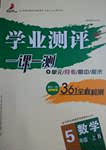题目内容
------_________________?
------ He is handsome, kind and honest.
A.What is Tom? B.What does Tom look like?
C.What is Tom like? D.What does Tom like?
C

练习册系列答案
 学业测评一课一测系列答案
学业测评一课一测系列答案
相关题目
假设你是高三毕业生李华。你班同学最近就高三学生是否应该上晚自习争论不休。请你就此给某英文报社的编辑写一封信,内容如下:
| 赞同理由 | 反对理由 | 你的观点 |
| 1.毕业班时间紧 2.有问题可以问老师; 3.有的学生在家里不自觉。 | 1.学生应该有自学的时间; 2.家里相对安静; 3.晚上去学校不安全。 |
注意:字数100词左右。可以适当添加少量内容以使行文连贯;开头语已为你写好,不计入总词数。
Dear editor,
I’m a Senior Three student.Recently, the students in our class had a discussion…
yours
Li Hua